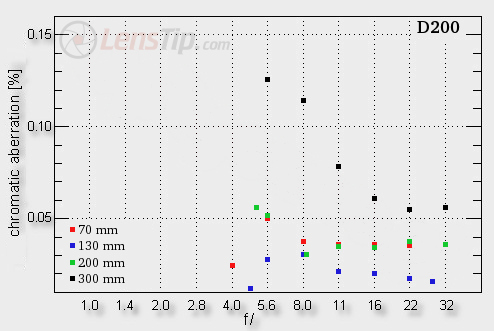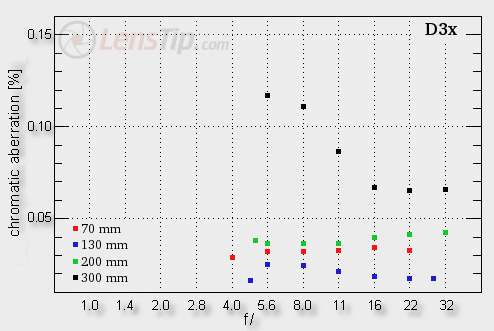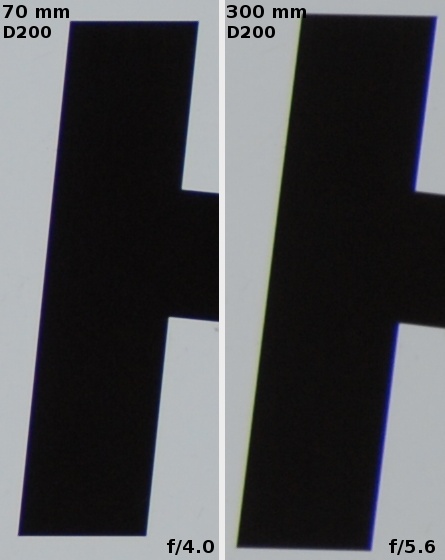Sigma 70-300 mm f/4-5.6 DG OS
5. Chromatic aberration


Please Support UsIf you enjoy our reviews and articles, and you want us to continue our work please, support our website by donating through PayPal. The funds are going to be used for paying our editorial team, renting servers, and equipping our testing studio; only that way we will be able to continue providing you interesting content for free. |
- - - - - - - - - - - - - - - - - - - - - - - - - - - - - - - - - - - - - - - - - - - - - - - -
In the 70-200 mm range the tested lens’s performance is sensational. Here, at almost all combinations of apertures and focal lengths, the results don’t exceed 0.05% so the aberration won’t bother us at all. These results are very similar, or maybe even a tad better than those of the Canon 70-300 mm IS.
Canon’s results worsened at 300 mm, where the chromatic aberration’s level increased from 0.08% to 0.11% on stopping down. The Sigma 70-300 mm OS fares the other way round. The aberration is the most pronounced at the maximum aperture, where it reaches 0.12-0.13% so a medium level (but nearing high), and it decreases on stopping down to a not very bothersome value of 0.06%.
 |






